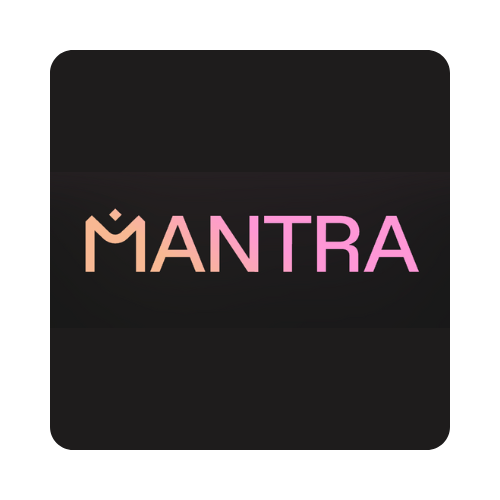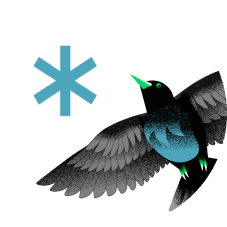
Mantra Finance
MANTRA is a vertically-integrated and regulatory-compliant blockchain ecosystem founded in 2020. Its mission is to bridge the gap between traditional finance and the world of digital assets by providing institutional-grade infrastructure that adheres to global regulatory standards.
The MANTRA ecosystem, also known as the OMniverse, includes several key products. MANTRA Nodes provides blockchain infrastructure-as-a-service, including validator operations and staking services. The MANTRA Chain is a protocol built for regulated assets within the Cosmos ecosystem, and MANTRA Finance is a DeFi platform that will offer a variety of services to both retail and institutional investors.
Through a partnership with hashport, a public utility that facilitates the movement of digital assets between networks, the OM token is now integrated with the Hedera network. This allows for faster, more secure, and lower-cost transactions for OM holders. This integration also opened the door for HeliSwap, a decentralized exchange (DEX) on Hedera, to offer trading pairs with the OM token, further expanding the DeFi possibilities within the Hed-era ecosystem.
Project Information
Related Projects

Choice is a financial technology company founded in 2020 that offers a platform for investing in both digital and traditional assets within a tax-advantaged retirement account. The company's mission is to provide investors with greater freedom and choice over their retirement savings, breaking away from the limitations of conventional Individual Retirement Accounts (IRAs).
The primary service offered by Choice is a single, unified retirement account that allows users to hold a diverse range of assets, including Bitcoin, various other cryptocurrencies, stocks, and ETFs. This eliminates the need for multiple accounts to manage different asset classes. A unique feature of the platform is "Blinko," a game that allows users to win free Bitcoin daily, encouraging engagement and consistent saving. The app is designed to be accessible to all types of investors, from beginners to experienced traders, and supports various IRA types, including Traditional, Roth, and SEP, as well as Solo 401(k)s.

Quarter Homes is a real estate technology company that modernizes vacation home ownership through a fractional, co-ownership model. It aims to make owning a second home more accessible and affordable by allowing up to four parties to collectively purchase and own a property. Quarter Homes manages the entire lifecycle of the property, including all legal, financial, and property management complexities, to provide a seamless, hassle-free experience.
The company’s innovative model incorporates the Hedera blockchain network, which underpins its operational framework. For each property, a unique LLC is established, and the legal ownership interest is divided into fractions represented as non-fungible tokens (NFTs) on the Hedera Token Service (HTS). This provides each owner with a verifiable, digital proof of ownership.
Quarter Homes leverages the Hedera Consensus Service (HCS) to create a transparent and immutable log of all activities associated with the property. This includes governance, maintenance activities and scheduling, ensuring all parties have a trusted and shared view of the property's status and history.

Bambu Wallet is a digital finance platform that provides accessible and culturally relevant financial tools. The company focuses on addressing the specific needs of the Latino demographic, aiming to foster financial inclusion and help users build wealth and achieve their financial goals.
The core of Bambu's offering is a digital wallet that integrates banking, payments, and investing into a single, user-friendly application. Key services include FDIC-insured checking accounts with no overdraft fees, early access to paychecks, and the ability to send money to over 18 countries in Latin America. Bambu also offers a unique "Round Up" feature that automatically invests spare change from everyday purchases into a diversified portfolio, making it easier for users to start investing with small amounts. The platform is designed to be bilingual, supporting both Spanish and English, to better serve its target audience.
Bambu leverages the Hedera network to enhance the speed and reduce the cost of its cross-border remittance services. By using Hedera's distributed ledger technology, Bambu can offer faster and more transparent international money transfers.

Starling Lab for Data Integrity is an academic research center that operates at the intersection of cryptography, decentralized web protocols, and the humanities. A joint initiative between the USC Shoah Foundation and Stanford University's Department of Electrical Engineering, the lab's mission is to develop and prototype tools and principles to establish trust in digital records. In an era of rampant misinformation and AI-generated content, Starling Lab is pioneering new methods to securely capture, store, and verify digital media.
The core of their work is the Starling Framework for Data Integrity, a comprehensive, open-source methodology for authenticating digital content. This framework is built on three pillars: Capture, which involves creating a chain of custody from the moment a photo or video is taken, Store, which uses decentralized networks like IPFS and Filecoin to securely distribute and preserve content, and Verify, which leverages immutable ledgers to register and audit the provenance of digital assets. This end-to-end approach has been applied in various real-world scenarios, from documenting the 78 days of the 2020 U.S. presidential transition with Reuters to preserving the USC Shoah Foundation's archive of 55,000 holocaust testimonies.
